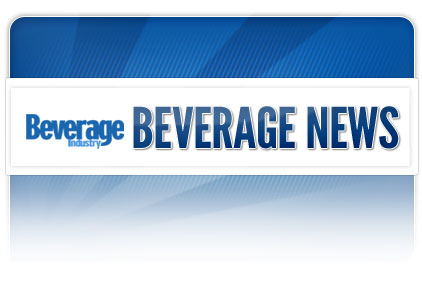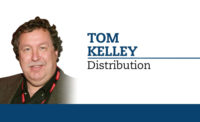Brewing is an extremely energy-intensive process in which the costs of electricity, heat, gas and other energy carriers make up a large share of total costs. Breweries that identify measures to improve energy efficiency reap several benefits — not least in terms of lower operating costs. They also create the prerequisites for making use of tax benefits, which only are available to companies that have established an energy management system (EnMS). TÜV SÜD supported a brewery located in southern Germany in the establishment of an EnMS in accordance with the ISO 50001 standard.
Production, storage and distribution processes at breweries all are associated with high energy use. As breweries operate in a very competitive market, they cannot simply pass on the rising energy costs to consumers by charging higher prices. Given this, many breweries have already started realizing individual measures to reduce their energy consumption, focusing frequently on the most energy-intensive steps in their production processes. This marks an important first step. However, to identify all cost-effective opportunities for improvement, breweries must look at the entire production chain.
Breweries must identify which steps in production offer potential for savings, which improvement measures promise the most business advantages, and how the effectiveness of the results achieved can be evaluated after implementation. Companies wishing to obtain thorough answers to these questions need a comprehensive and systematic approach, such as that offered by the international EN ISO 50001 standard titled "Energy management systems — requirements with guidance for use.” In a first step, all energy flows in the company are recorded and documented. These data then form the basis of investment decisions to improve energy efficiency.
In its guide "Energy Management Systems in Practice (1)," the German Federal Ministry for the Environment, Nature Conservation and Nuclear Safety emphasizes that the ISO 50001 standard offers easy integration into other already established management systems, particularly in the fields of quality management (ISO 9001) and environmental management (ISO 14001). This is because all of these systems are based on the plan-do-check-act (PDCA) cycle. Given this, companies that integrate an EnMS into existing management systems need less personnel, time and financial resources. However, for EnMS implementation to be successful, the responsibilities for energy, environmental protection, quality and safety must be established, their scopes clearly defined, and intelligent use made of the synergies at their interfaces.
At the German brewery, the implementation of the energy management system started with an energy review that considered both the technical systems and the organizational situation available. When evaluating the data, TÜV SÜD's energy experts found that the brewery already fulfilled many of the requirements set forth in the ISO 50001 standard. For example, it was already using suitable measurement instruments to record and document all important data of energy consumption and improving its systems and installations regularly under the aspect of energy efficiency. One of the areas that required action was the company's energy management manual, which also is demanded by the standard. The manual is designed to describe the processes for improving energy efficiency and ensure the ongoing implementation of the targeted measures. To this end, the brewery also must develop and communicate specific instructions for individual workplaces. The standard further requires the appointment of a responsible energy management representative who organizes regular workshops and advanced training for the company's personnel to raise employee awareness of energy efficiency at all levels of hierarchy and enable personnel to contribute innovative ideas that help the brewery to reach the efficiency targets it has set for itself.
In step two, the brewery organized multi-day workshops on the ISO 50001 standard, which were facilitated and accompanied by TÜV SÜD's energy-efficiency experts. The representatives from various areas of the company that attended the workshops now form the "energy team" that is firmly integrated into the company's organizational structure. Evaluating the available data, the team first analyzed the energy consumption of the individual steps in the production process and assessed their significance. After this, the team discussed which measures offer cost-effective improvement of the energy efficiency of individual systems. One discovery from the discussion was that the brewery's existing waste-heat recovery system can be expanded and improved, as some installations still release their waste heat into the atmosphere unused. Only some of the systems in the brewery use waste-heat recovery, in which waste heat is taken up by a heat carrier medium and directed to well-insulated thermal storage units for intermediate storage. The heat is then available for use by other energy-intensive processes at any time. By integrating all possible heat suppliers into the existing waste-heat recovery system, the brewery can thus unlock additional energy savings.
On-site combined heat and power plants that run on natural gas generate electricity and heat simultaneously, thus achieving excellent efficiency of about 90 percent. Keeping this in mind, the brewery invested in its own in-house combined heating and power plant to permanently reduce the cost of electricity and heat supplied by outside sources. The plant also can be fueled with biogas so that the brewery now can treat certain waste products of its production process and reuse them for energy production. In anaerobic wastewater treatment, for example, biogas is produced as digester gas, and the brewer grains also can be used in a biogas plant for the production of additional fuel. By implementing these measures, the brewery reuses available resources to cover some of its energy demand, thus reducing the volume of energy purchased from outside sources. Last but not least, the use of energy from renewable sources also improves the company's carbon footprint.
Continuous improvement process
An energy management system in accordance with ISO 50001 helps companies to actually reach their medium- and long-term targets. As with other management systems, long-term success is ensured by an iterative process based on the PDCA cycle. The process starts with the company developing a vision, i.e. defining the energy-saving targets to be reached within a specific period. Management can, for example, define that the energy use for the same production volume is to be reduced by 5 percent during the next five years. Subsequently, the company develops and implements specific energy-saving measures. Following the implementation of these measures, the EnMS enables an objective assessment to be made of whether the targets actually have been reached. The PDCA cycle is completed within a period of one year, giving top management the opportunity to implement timely counteractions if necessary. Given this, the PDCA cycle results in a continual improvement process in which the company objectively assesses the established procedures and identifies further areas of energy savings on an ongoing basis.
Securing tax benefits
The introduction of an energy management system in accordance with ISO 50001 offers tangible benefits at several levels. In the medium- and long-term, breweries benefit from improved energy and resource efficiency, and thus lower production costs. At the same time, they live up to their social accountability by contributing to improved sustainability. The agenda set up by the German government provides for a 20 percent reduction in the use of primary energy by 2020 and a 50 percent improvement in energy efficiency by 2050. Given this, companies that establish a certified EnMS are eligible for energy tax relief measures. Environmentally friendly and sustainable operation is rewarded not only by the government but also by beer drinkers. Consumers expect natural products, such as beer that is brewed in accordance with the German beer purity law, to be produced in an eco-friendly manner. An EnMS, therefore, provides marketing and corporate communication departments with additional opportunities and ensures a positive company image. Taken together, all of these factors improve the company's competitive strength.
The energy audit for small and medium-sized enterprises
Many companies carry out an energy audit in accordance with the European EN 16247 standard, to determine actual energy input and consumption, as an important first step to the identification and realization of potential energy savings. TÜV SÜD's experts systematically assess all relevant energy consumers, analysing load curves over time and using these data to identify potential savings. The procedure set out in the EN 16247 standard is a useful preparatory stage for the establishment of an EnMS. Furthermore, small and medium companies only need to carry out an energy audit to obtain reimbursement of some of their energy and electricity tax under the "energy-tax cap".
Legal framework conditions
Provided companies in the manufacturing sector comply with certain conditions, a portion of the energy and electricity tax paid can be reimbursed by the main customs office. The "energy-tax cap" is one of several options in this context. The reimbursement amount in the individual case depends on the volume of energy purchased and the number of employees.
Since early 2013, companies that intend to apply for an “energy-tax cap” have had to provide evidence that they contribute to the improvement of energy efficiency. Evidence can be provided in the form of an EnMS in accordance with the international EN ISO 50001 standard, an EnMS in accordance with EMAS, or a binding letter of intent issued by the company's management declaring that the company plans to establish such a system in the near future. The introduction of such an EnMS must be completed by late 2015 and must be certified by an accredited certification body. The "energy-tax cap" is further linked to specific targets applying to the entire manufacturing sector. From 2015 onward, all companies must reduce their total energy intensity by at least 1.3 percent each year. From 2017 onward, this percentage increases to 1.35 percent annually.




